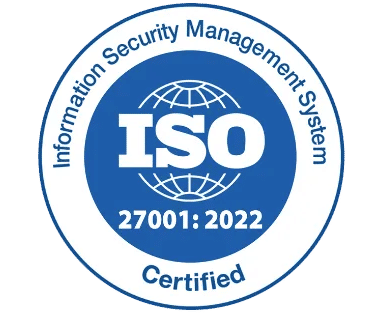9 Stages of Contract Lifecycle Management Explained with Examples

Understanding how contracts flow through each stage is just as critical as managing them effectively across your organization.
Many teams search for this because they want to fix a problem. Some face slow approvals. Others miss deadlines or forget contract renewal process. Some want better control. Others need a clear process that works every time.
But when business understand each stage, everything becomes easier. They have clear direction on what actions to take and the right time to take them.
This guide breaks down every stage in a clear and easy-to-follow format. From start to finish, you will learn how to manage contracts step by step. Designed for teams seeking transparency, speed, and measurable outcomes.
Why Knowing the Stages of Contract Lifecycle Management Matters
A study by Gartner, procurement, sales, and legal teams continue to face increasing pressure from the business to accelerate contract creation and execution. Knowing each stages of contract lifecycle management helps you tackle common roadblocks with clarity and control. It offers several important benefits.
- Understanding each stage allows procurement, sales, and legal teams to anticipate needs and prepare in advance. This reduces last-minute efforts and speeds up the overall contract process.
- Knowing the stages creates a repeatable and organized process that guides contracts from initiation to closure.
- Each stage defines who is responsible and what needs to happen next. This clear approach reduces delays and ensures steady contract progress.
- Defined stages help unify contract processes across all departments for consistency and control. This consistency fosters smoother collaboration and drives better results.
- When the stages are defined, it is easier to ensure contracts meet internal policies and legal standards. This strengthens compliance and reduces risk.
- Structured stages help teams collaborate more effectively, especially during drafting and negotiation. Everyone knows when to contribute and what is expected.
- Clear visibility at every stage helps teams stay on track and move forward with confidence. Departments can quickly identify delays and act before issues grow.
- A clear process leads to fewer mistakes and faster decision-making. This is especially helpful during review and approval steps.
- Structured stages empower teams to deliver faster outcomes without compromising on quality. This builds trust across departments and supports business goals.
9 Stages of Contract Lifecycle Management
The stages of contract lifecycle management help businesses manage contracts faster, with less risk and more control. From request to archival, each stage ensures clarity, compliance, and better outcomes. This guide outlines each stage to help you manage contracts with greater clarity and efficiency.
Stage 1: Contract Request
The contract lifecycle management process starts when a team member send a formal request to create a contract. This includes basic information like the contract type, involved parties, value, scope of work, and deadlines. It makes sure that the process starts with clarity and intent.
- Prevents miscommunication by collecting all essential inputs at the start
- Assists to prioritize requests based on urgency or complexity
- Helps involve the right team from the very beginning of the process.
A procurement manager submits a request to create a vendor agreement for a new software subscription. The form includes the vendor’s name, contract duration, and expected cost.
Stage 2: Contract Authoring
After the request is approved, the legal or contract team begins drafting the agreement. They use approved templates and standard language, adding any custom terms from the initial request.
- Saves time by using templates and reusable language
- Ensures alignment with company policies and deal terms
- Promotes uniformity across contracts, reducing legal exposure and minimizing mistakes.
The legal team prepares a draft using the company’s master service agreement template, adding customized deliverables and payment terms.
Stage 3: Contract Internal Review
Before the contract draft is shared with the external party, it undergoes a thorough internal contract review. Key stakeholders typically from legal, finance, and compliance teams examine the contract to ensure accuracy, consistency, and alignment with internal policies. This step helps identify and resolve any potential risks, errors, or gaps early.
- Spots potential issues early, before the contract is shared with the other party.
- Ensures compliance with internal controls and financial limits
- Brings multiple teams into alignment before negotiation begins
The finance department checks the billing structure, and legal reviews the liability clauses before giving the green light to send the draft to the vendor.
Stage 4: Contract Negotiation
At this stage, the draft contract is sent to the external party for their input and feedback. During this stage, the draft contract is sent to the external party for their review and input. Both sides exchange feedback, suggest edits, and propose redlines to reach mutually acceptable terms. Contract negotiation process typically focus on key elements such as risk allocation, pricing, timelines, deliverables, and any custom terms. The goal is to protect each party’s interests while finalizing terms that support a successful working relationship.
- Helps reach mutually agreeable terms without compromising business interests
- Builds stronger partnerships by addressing each side’s concerns
- Protects the company by negotiating favourable terms
The vendor requests a 50% upfront payment. The company negotiates a milestone-based payment structure and adjusts the service start date accordingly.
Recommended Read: Effective Contract Negotiation Strategies
Stage 5: Contract Approval
After both parties agree on the final contract terms, internal approval is required before execution. This step ensures that key decision-makers such as department heads, finance, legal, or senior leadership formally review and sign off on the agreement. A good contract approval process help verify that the contract aligns with company policies, budgets, and risk thresholds before it becomes legally binding.
- Ensures final terms are thoroughly reviewed and endorsed
- Confirms that the deal aligns with business priorities
- Reduces risk of unauthorized or non-compliant agreements
The Head of Procurement and the CFO approve the finalized contract after confirming the pricing and budget impact.
Stage 6: Contract Execution
After internal approvals are complete, the contract moves to execution, where both parties officially sign the agreement. This can be done electronically using e-signature tools or through traditional manual signatures. A fully executed contract becomes legally binding and is stored in a central repository for easy access, tracking, and future reference.
- Legally binds both parties to agreed terms
- Serves as the official start of the business relationship
- Enables downstream teams (e.g., operations, finance) to begin work
Both parties sign the agreement through electronic signature. The signed copy is uploaded to the company’s contract repository and shared with the operations team.
Stage 7: Contract Obligation Management
Once the contract is active, relevant teams are responsible for tracking and fulfilling all agreed-upon obligations. This includes managing deliverables, payments, timelines, performance metrics, and service levels. Proper contract obligation management ensures that both parties meet their responsibilities, helps avoid missed deadlines or penalties, and supports consistent contract performance throughout its lifecycle.
- Makes sure all terms are fulfilled on time and within scope
- Helps avoid missed deadlines, penalties, or poor service
- Strengthens accountability across teams
The project team sets reminders for monthly service reviews, while finance processes invoices based on the agreed timeline.
Stage 8: Contract Amendment or Renewal
Over time, business needs may change, requiring updates to the existing contract. This stage covers any formal modifications such as adding new terms, adjusting scope, or extending the contract duration. Contract amendments are documented to ensure legal clarity.
- Maintains continuity of service or supply
- Allows for performance-based adjustments or improvements
- Reduces legal risks from expired or outdated terms
After six months, the vendor offers an extra service. The company updates the contract to include the new service and changes the pricing and scope to match.
Stage 9: Contract Expiry or Archival
When a contract successfully reaches its end or is concluded early, it enters the closeout phase. Final deliverables or payments are confirmed to ensure everything has been completed as agreed. The contract is then safely archived for easy access, future reference, and compliance. A well-managed closeout sets the stage for stronger future partnerships and clean recordkeeping.
- Wraps up the contract smoothly without leaving anything behind
- Supports audit readiness and legal record-keeping
- Keeps past contracts organized for easy access and future insights
In this stages of contract lifecycle management, the vendor completes the final deliverable. The contract is marked as closed, reviewed for final compliance, and archived securely in the contract management solution.
How CLM 365 Helps Manage the Legal Process Effectively
CLM 365, built on the Microsoft ecosystem, integrates seamlessly with Teams, Outlook, and SharePoint. It offers a centralized contract repository and smart collaboration tools that allow teams to draft, review, redline, and approve contracts all in one place.
From contract request to execution and renewal, CLM 365 supports every stages of the contract lifecycle with built-in workflows, version control, and compliance tracking. Available on the Microsoft AppSource, it helps businesses streamline legal processes and work faster with fewer risks.
Conclusion
A contract is more than just paper, it’s a commitment built on trust. Managing that promise well requires full control of every stage of contract lifecycle management. CLM 365 helps you deliver on that promise. It keeps your teams aligned, your contracts compliant, and your deals moving forward.
Move faster. Work smarter. Start with CLM 365. Book a free demo.
Frequently Asked Questions
How is a contract created?
A contract is created when a specific business need is identified, and a formal request is submitted. This request typically includes key details like parties involved, objectives, and timelines.
Why is internal review necessary?
Internal review is essential to confirm that the draft contract meets legal standards, follows internal policies, and protects the organization’s interests.
How can software help manage all stages of contract lifecycle management?
Contract management software streamlines the entire process by automating tasks like approvals, reminders, and renewals. It tracks edits and version history for better collaboration and compliance. Most importantly, it centralizes all contracts and related data in one secure place.
What departments are involved in contract lifecycle management?
Multiple departments contribute at different stages. Legal oversees compliance and risk, procurement handles vendor contracts, sales manages client agreements, and finance ensures budget alignment. Compliance teams review regulatory needs, while operations track deliverables and performance.
Why is internal review necessary?
Internal review helps catch errors, reduce legal risks, and ensure the contract reflects company policies and objectives. It allows legal, finance, and compliance teams to check for accuracy, regulatory adherence, and business alignment before sharing the contract externally.









_svxLrd-8yH.png)

_2VYSFUTN5m.png)

_JiluXJRGNl.svg)

_2djTKNocf.png)





_Rapo0hRMBy.png)

















